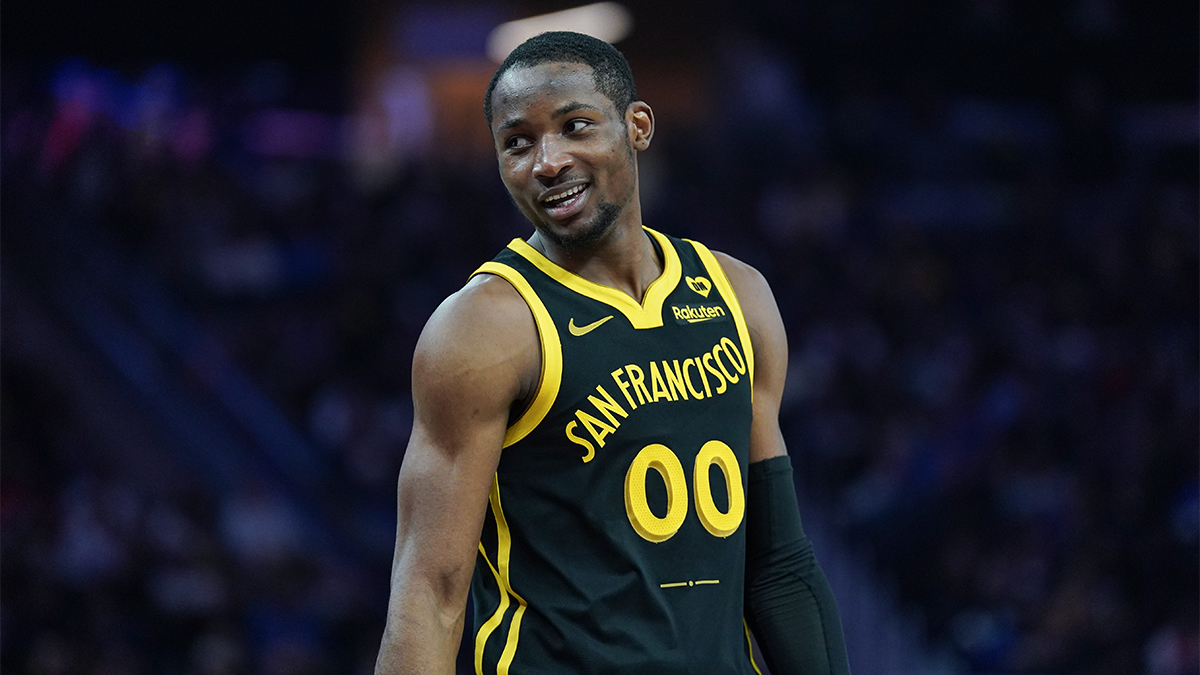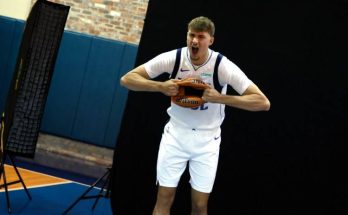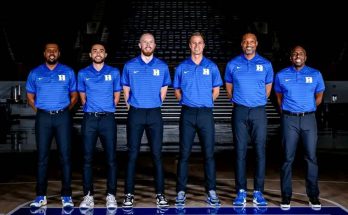The Golden State Warriors have reportedly decided that Jonathan Kuminga will not be traded this summer and plan to keep him on their roster for the upcoming season. This report comes from Tim Kawakami, a respected insider who has covered the Warriors for years and is known to have close ties within the organization. According to Kawakami, despite various trade talks and conflicting signals earlier in the offseason, the Warriors have made the internal decision to retain Kuminga, viewing him as either a part of their present core or a long-term asset they’re not willing to lose for anything less than a significant return.
This move closes the door, at least temporarily, on what had been one of the more unpredictable subplots of Golden State’s offseason. Kuminga, who is entering his fourth NBA season, had reportedly been unhappy with his role in previous years, including being benched during critical playoff games. Despite flashes of athletic dominance and all-star potential, he struggled to secure a consistent role in head coach Steve Kerr’s rotation, which at times valued floor spacing and veteran reliability over raw upside. Still, Kuminga has remained one of the most intriguing young forwards in the NBA—a player whose ceiling is as high as nearly anyone in his age group.
The decision not to trade him this summer comes after a series of rumors, trade talks, and negotiations that, at various points, suggested he could be on the move. Teams such as the Sacramento Kings and Phoenix Suns were reportedly interested in acquiring him via sign-and-trade deals, offering packages that included veteran players, picks, and salary fillers. However, none of these offers met Golden State’s valuation of Kuminga, and the front office, led by Mike Dunleavy Jr. and owner Joe Lacob, ultimately declined to pursue those avenues further.
One of the central issues in the stalled negotiations revolved around contract terms. Kuminga reportedly turned down a two-year, \$45 million deal from the Warriors, primarily due to the inclusion of a team option in the second year and the removal of his no-trade clause. That clause is important because it gives him control over where he might be traded in the future, something he clearly values given the uncertainty of his role in Golden State. The rejection of the offer signaled that Kuminga is betting on himself—not just to earn more money, but to take control of his future.
Instead of accepting the team’s proposed deal, Kuminga is now expected to play under the \$7.9 million qualifying offer, which would make him an unrestricted free agent next summer. This is a rare move for a player of his profile, but not unprecedented. By accepting the qualifying offer, Kuminga gains full control of his future after the season, maintains his veto rights over trades for the remainder of the year, and avoids being tied to a contract that may not reflect his long-term value. Of course, this path comes with risk: if he gets injured or underperforms, it could damage his free agency value. But it also sends a clear message—he believes in his talent, and he wants a bigger role, now or elsewhere.
From the Warriors’ side, the calculus is equally complicated. On one hand, Kuminga is one of their most valuable young assets, and moving him for a lesser return would signal a short-sighted shift in priorities. On the other hand, the current roster already features several players who operate in the same on-court spaces as Kuminga, including Draymond Green, Andrew Wiggins, and newly acquired Jimmy Butler. This overlap raises questions about whether there is enough playing time or offensive responsibility to keep everyone satisfied. Head coach Steve Kerr has at times struggled to fully integrate Kuminga’s skill set into his motion-heavy, ball-sharing offensive system, which prioritizes decision-making and spacing—two areas where Kuminga still has room to grow.
Still, the Warriors recognize that Kuminga is not the kind of player you give up on easily. At just 22 years old, he has already shown elite defensive potential, improved finishing around the rim, and flashes of mid-range scoring that suggest he could become a 20-point scorer in the right system. His physical tools—explosive leaping ability, lateral quickness, strength, and size—make him a matchup nightmare when he’s fully engaged. The question has never been about talent, but about consistency, role clarity, and long-term fit.
Joe Lacob, who has always been outspoken about player development and long-term planning, is said to be a strong supporter of Kuminga. Reports indicate that Lacob views him as a future star and a cornerstone for the next iteration of the Warriors after the Steph Curry era winds down. Trading Kuminga now, especially without getting a legitimate star or top-tier draft assets in return, would run counter to that philosophy. The front office seems to agree, viewing this summer as a time to regroup and evaluate—not to panic or overcorrect.
The lack of a trade also has practical implications. The Warriors are brushing up against the NBA’s second tax apron, and making a sign-and-trade deal involving Kuminga would have required matching salaries, luxury tax navigation, and possibly additional asset dumping. From a financial standpoint, retaining Kuminga on the qualifying offer is the most cap-efficient option, even if it introduces risk down the line.
Kuminga’s likely return on the qualifying offer also gives the team a full season to reassess his value in a new context. Perhaps with Butler taking some of the attention and Draymond in more of a facilitative role, Kuminga will have more opportunities to exploit mismatches, run in transition, and flash the two-way dominance that made him a lottery pick in 2021. If he thrives, the Warriors can either try to re-sign him next summer or use him in a larger trade that fetches greater value. If he stagnates, the team will at least have clarity on his long-term fit.
It’s important to note that locker room dynamics will play a role here. There were whispers last season about Kuminga’s frustration with his role, and while he has never publicly demanded a trade, it’s no secret that he wants a bigger opportunity. The coaching staff, meanwhile, has to balance the urgency of competing for a championship with the developmental needs of a young player trying to break through. That’s not an easy balance, and if things go south early in the season, the tension could resurface. But for now, both sides seem prepared to give the partnership one more real shot.
From a league-wide perspective, this move—or non-move—signals that the Warriors are not willing to get pushed into a bad deal, even if it means dealing with some discomfort in the short term. Other teams will take notice. Kuminga still has a trade market, and if Golden State chooses to move him closer to the deadline, they may find more aggressive buyers once teams have a clearer picture of their playoff positioning and injury status.
In the meantime, all eyes will be on how Kuminga handles the situation. Playing under a one-year qualifying offer can be tricky—it’s a contract year in the truest sense, and every game will be scrutinized not just by Golden State but by teams around the league. Will he embrace the opportunity and prove he’s worth the max or near-max contract he desires? Will he clash with the coaching staff again if his role doesn’t expand? Or will he quietly put together the most productive season of his young career and force the Warriors to re-evaluate their long-term plans?
One thing is clear: this decision adds another layer of intrigue to what was already shaping up to be a pivotal season for Golden State. With the core of Curry, Butler, and Green getting older, and with Klay Thompson no longer in the picture, the Warriors need their young talent to step up. Kuminga represents the best hope of bridging the gap between the current era and the next. Whether he seizes that moment or not will have massive implications—for his future, for the team’s direction, and possibly for the final years of Steph Curry’s legendary career.
The Warriors are gambling that patience will pay off. That Jonathan Kuminga, finally given a real chance, will blossom into the two-way force they envisioned when they drafted him. That one more season together might bring clarity, growth, and maybe even a championship push. And that when the dust settles, they won’t regret turning down the trade offers that came their way.



